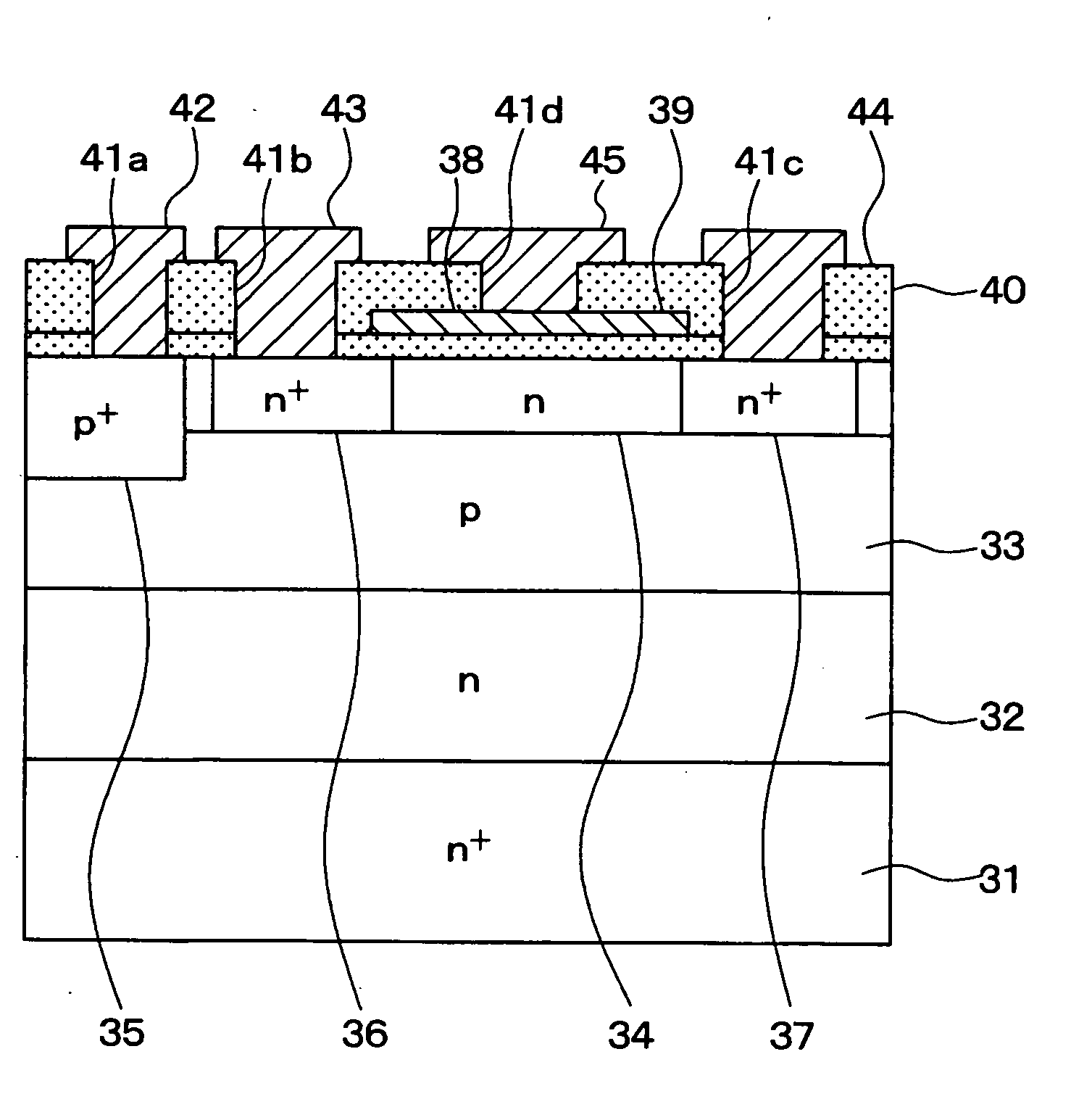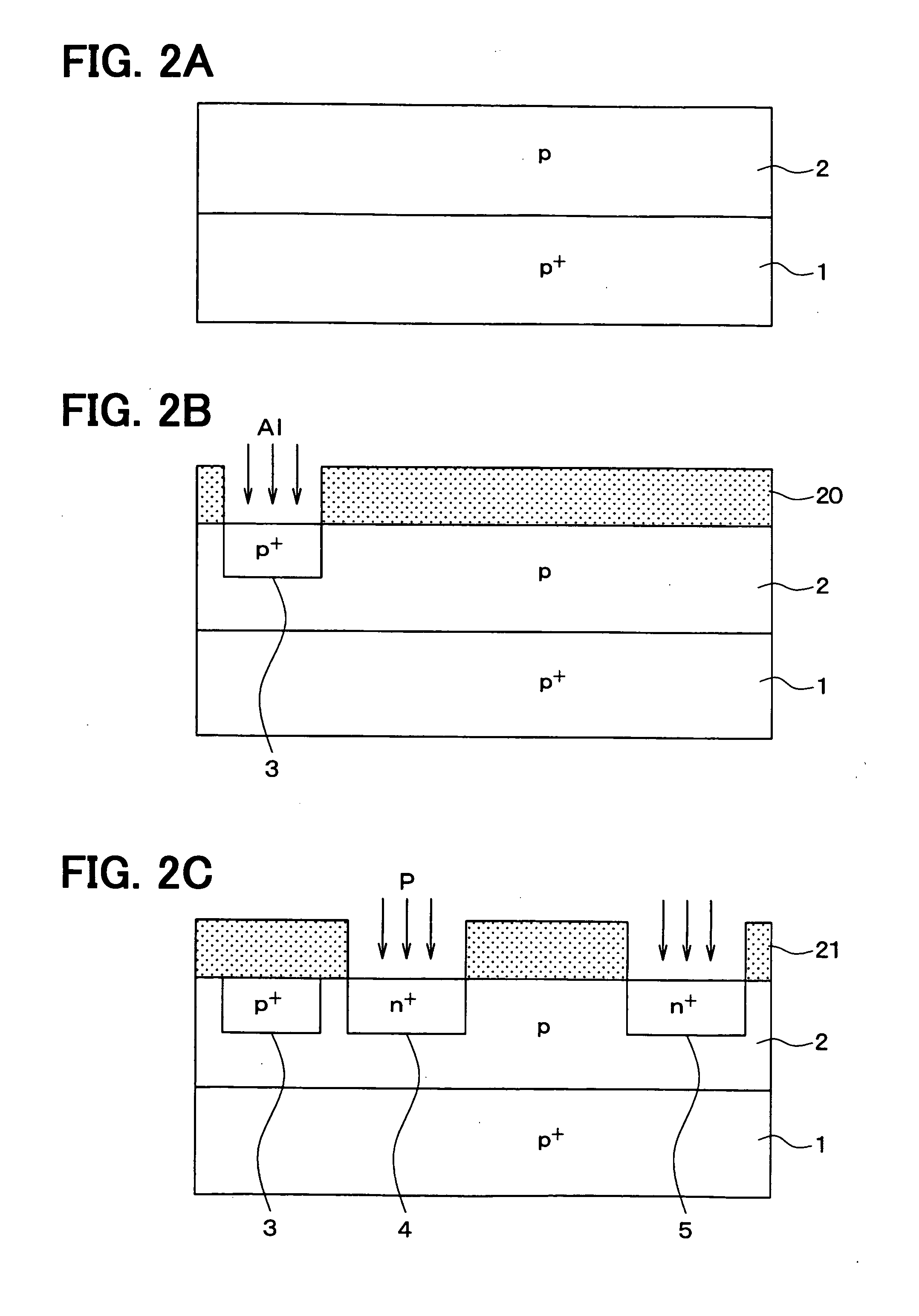SiC semiconductor device and method for manufacturing the same
a semiconductor device and semiconductor technology, applied in the direction of semiconductor devices, basic electric elements, electrical appliances, etc., can solve the problems of inability to thicken by thermal oxidation, inability to use mos interface formation method, and time-consuming mos polishing for processing substrate surfaces using oxidation reactions, etc., to achieve high channel mobility and reduce interface state density. , the effect of low density
- Summary
- Abstract
- Description
- Claims
- Application Information
AI Technical Summary
Benefits of technology
Problems solved by technology
Method used
Image
Examples
first embodiment
[0065]In view of the above study, in the present embodiment, an inversion-mode lateral MOSFET is provided. FIG. 1 shows a cross-sectional structure of the inversion-mode lateral MOSFET, while FIGS. 2A to 2C and 3A to 3C show the steps of manufacturing the inversion-mode lateral MOSFET shown in FIG. 1. Referring to these drawings, the structure and manufacturing method of the inversion-mode lateral MOSFET according to the present embodiment will be described.
[0066]As shown in FIG. 1, a p+-type substrate 1 made of SiC has a principal surface on one side thereof, and a p-type base layer 2 made of epitaxially grown SiC is formed on the principal surface of the p+-type substrate 1 to provide a p / p+ substrate used as a semiconductor substrate. As the p+-type substrate 1, a substrate made of, e.g., 4H—SiC, having a (000-1) C face as the principal surface, and having an impurity concentration of about 5×1018 cm−3 is used. The p-type base layer 2 has an impurity concentration of, e.g., about...
second embodiment
[0087]The present embodiment also relates to the inversion-mode lateral MOSFET. The present embodiment is different from the first embodiment in that the method of manufacturing the inversion-mode lateral MOSFET is partly changed, and is the same as the first embodiment in terms of the structure of the inversion-mode lateral MOSFET and the like.
[0088]The inversion-mode lateral MOSFET according to the present embodiment is manufactured by adding the manufacturing step shown in FIG. 6 to the method of manufacturing the inversion-mode lateral MOSFET shown in FIGS. 2A to 2C and 3A to 3C according to the first embodiment.
[0089]That is, after performing the individual steps shown in FIGS. 2A to 2C and FIGS. 3A and 3B, the process shown in FIG. 6 is performed. Thereafter, by performing the process shown in FIG. 3C and the like, the inversion-mode lateral MOSFET having the same structure as in the first embodiment is manufactured.
[0090]Specifically, in the step shown in FIG. 6, round-off ox...
third embodiment
[0095]The present embodiment also relates to the inversion-mode lateral MOSFET. The present embodiment is different from the first or second embodiment in that the method of manufacturing the inversion-mode lateral MOSFET is partly changed, and is the same as the first or second embodiment in terms of the structure of the inversion-mode lateral MOSFET and the like.
[0096]The inversion-mode lateral MOSFET according to the present embodiment is manufactured by changing the step of forming the interlayer insulating film 8 shown in FIG. 3C of the method of manufacturing the inversion-mode lateral MOSFET shown in FIGS. 2A to 2C and 3A to 3C (and FIG. 6) described above to the step shown in FIGS. 8A and 8B.
[0097]That is, by performing the individual steps shown in FIGS. 2A to 2C and FIGS. 3A and 3B (or further performing the process shown in FIG. 6) and subsequently performing the process shown in FIGS. 8A and 8B, instead of the process shown in FIG. 3C, the inversion-mode lateral MOSFET h...
PUM
 Login to View More
Login to View More Abstract
Description
Claims
Application Information
 Login to View More
Login to View More - R&D
- Intellectual Property
- Life Sciences
- Materials
- Tech Scout
- Unparalleled Data Quality
- Higher Quality Content
- 60% Fewer Hallucinations
Browse by: Latest US Patents, China's latest patents, Technical Efficacy Thesaurus, Application Domain, Technology Topic, Popular Technical Reports.
© 2025 PatSnap. All rights reserved.Legal|Privacy policy|Modern Slavery Act Transparency Statement|Sitemap|About US| Contact US: help@patsnap.com



